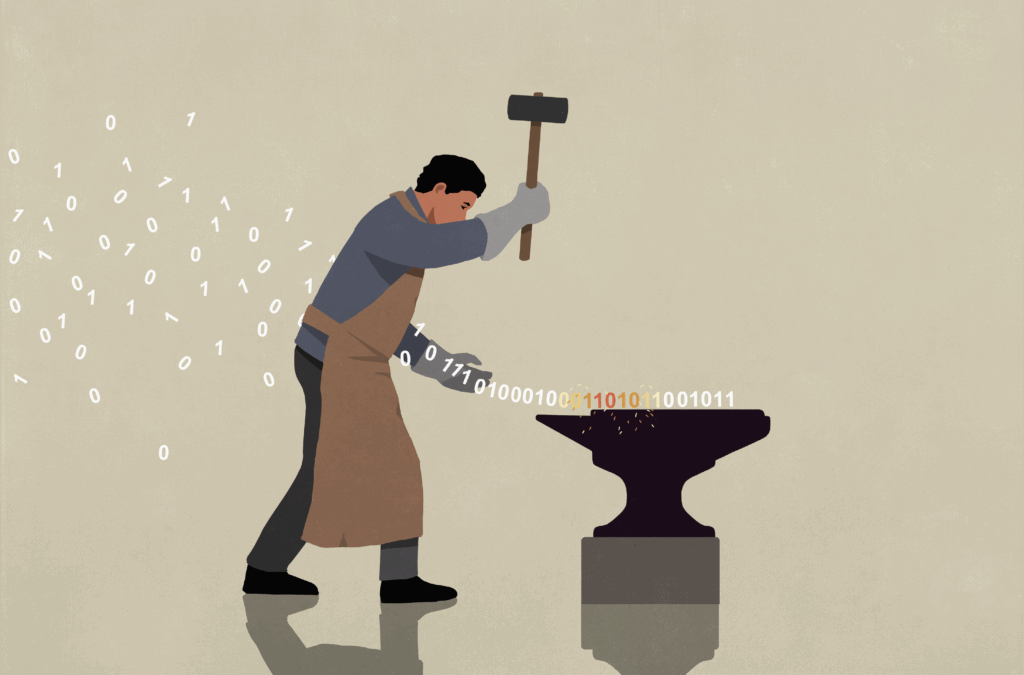
Human-Robot Relationships Are Here to Stay

You’ve twisted your ankle. At the hospital, you enter a dim room to have your X-rays taken, hoping it’s not broken.
The technician captures all the angles and sends the images off to an expert. Whom would you rather have looking at your X-rays: a radiologist who finished top of the class at Johns Hopkins or a 1-year-old machine learning algorithm?
Sitting in the waiting room, you scroll through stats on your phone and read that machine learning algorithms consistently operate with lower error rates than radiologists. Knowing this, of course you’d rather have your X-rays interpreted by a robot than a human.
But consider that when the two work in tandem—the robot taking the first stab, then the human checking the robot’s work—you get greater accuracy than if either worked alone.
Get ready for human-bot partnerships.
The Promise of RPA
The same is true for our industry as we introduce robotic process automation (RPA) into our operations. Many agencies have service environments riddled with inconsistent processes and legacy systems, and too often we see the solution as either human-centric or tech-centric instead of deeply examining the interdependence and strengths of each within our processes.
With every passing year, automation offers more powerful tool sets for operations. McKinsey reports that automation can reduce the cost of a claims journey by 30% and that, within a decade, 90% of all small commercial claims will be fully automated.
Efficiency gains aren’t guaranteed, though. You have to work for them, sometimes harder than if you’d kept your people-powered processes. To fulfill the promise of RPA, we must pay attention to how we integrate automation with our teams, processes and data.
Let’s examine some of the typical pitfalls that unravel automation projects.
Pitfall No. 1: Underestimating Complexity
Nobody wants to be left behind in today’s digital transformation. It’s a sensitive subject for insurance leaders in particular. A 2017 survey by Willis Towers Watson reveals that 58% of insurance executives feel they lag behind other financial service sectors, especially in terms of digital technology. We all sense the great potential of artificial intelligence and its inevitability. What feels less inevitable is the resilience of traditional agencies in the face of challenges from insurtech, direct writers and new entrants in the field.
Amid the pressure to adopt new technology, some agencies are attracted to RPA yet may abandon the new tools when they fail to win adoption or deliver expected savings. Ernst and Young estimates that’s the case for 30-50% of initial RPA projects.
Digital quick fixes make it easy to overlook the complexities we operate within. There are myriad moving parts and processes that need to be constantly monitored and managed, thousands of SIC codes, hundreds of ACORD applications, scores of carrier partners and 50 state regulatory agencies. That’s a lot of variability to manage.
With no general AI, no single bot can navigate this complex environment. Automating a complete agency would require a library of hundreds of tools and bots, each handling small sections of the end-to-end process. Even for the radiology bots, they excel at reading X-rays, but that’s only one part of a radiologist’s job.
Pitfall No. 2: Leaving Your Bots Unsupervised
A challenge that plagues most insurance organizations is procedural discipline. As soon as you’ve written your standard operating procedure, there’s a change in the workflow. But did anyone update the procedure? For people-led processes, it’s daunting enough, but bots live on even more intricate, detailed procedures that are vulnerable to breakdowns when there is an unscripted process change.
Even mature business processes require several procedure changes every quarter. These may be small adjustments like a form change on a carrier website. If a person is doing the work and discovers this change, that person can usually adapt on the spot.
A robot, on the other hand, might encounter this change and get stuck or, worse, may enter the wrong information…over and over again. Who is checking up on this? How long will it take to catch? How many E&O incidents could be caused in the meantime? Your robots are only as effective as the audit process and the humans managing it.
Pitfall No. 3: Humans Are from Venus, Bots Are from Mars
In designing automated processes, it’s important to acknowledge a simple truth: humans and robots don’t work the same way. While robots are inflexible, humans are too adaptive (just consider urgent producer requests). Robots are indefatigable; whereas, humans need their bathroom and water cooler breaks.
It’s necessary to reengineer processes to suit the strengths and limitations of each. For example, a people-powered process for rating an auto policy may start with qualifying the account based on motor vehicle records data and loss history. Then the human goes online to check the vehicle information (make, model, cost) against data on the application from the customer before moving on to rate.
Bots are great for pulling data from websites, a tedious task, but in this instance, that step comes right in the middle of the process. Automate this step, and you’ll leave the human with a few minutes of downtime mid-task. So why not have the bot conduct all the data pulling in one overnight batch, then have the person qualify the account afterwards? This eliminates the downtime and streamlines the end-to-end process.
It’s All About Integration
While the rewards of automation can cumulatively be meaningful, it’s easy to underestimate how much time, effort and training goes into building a sustainable RPA environment. Understanding how to integrate your teams and RPA tools is the starting point of a successful human-robot partnership.
Finally, it’s worth acknowledging that all relationships need chemistry. IT teams rarely have the proximity to the processes to understand the role bots can and can’t play. Service teams seldom have the programming skills or bandwidth to monitor and debug broken bots. So creating a new kind of role within your organization that’s part tech, part service may be the way to go.
This might also be a great way to engage your Gen Y and Gen Z recruits, hungry for new challenges.




